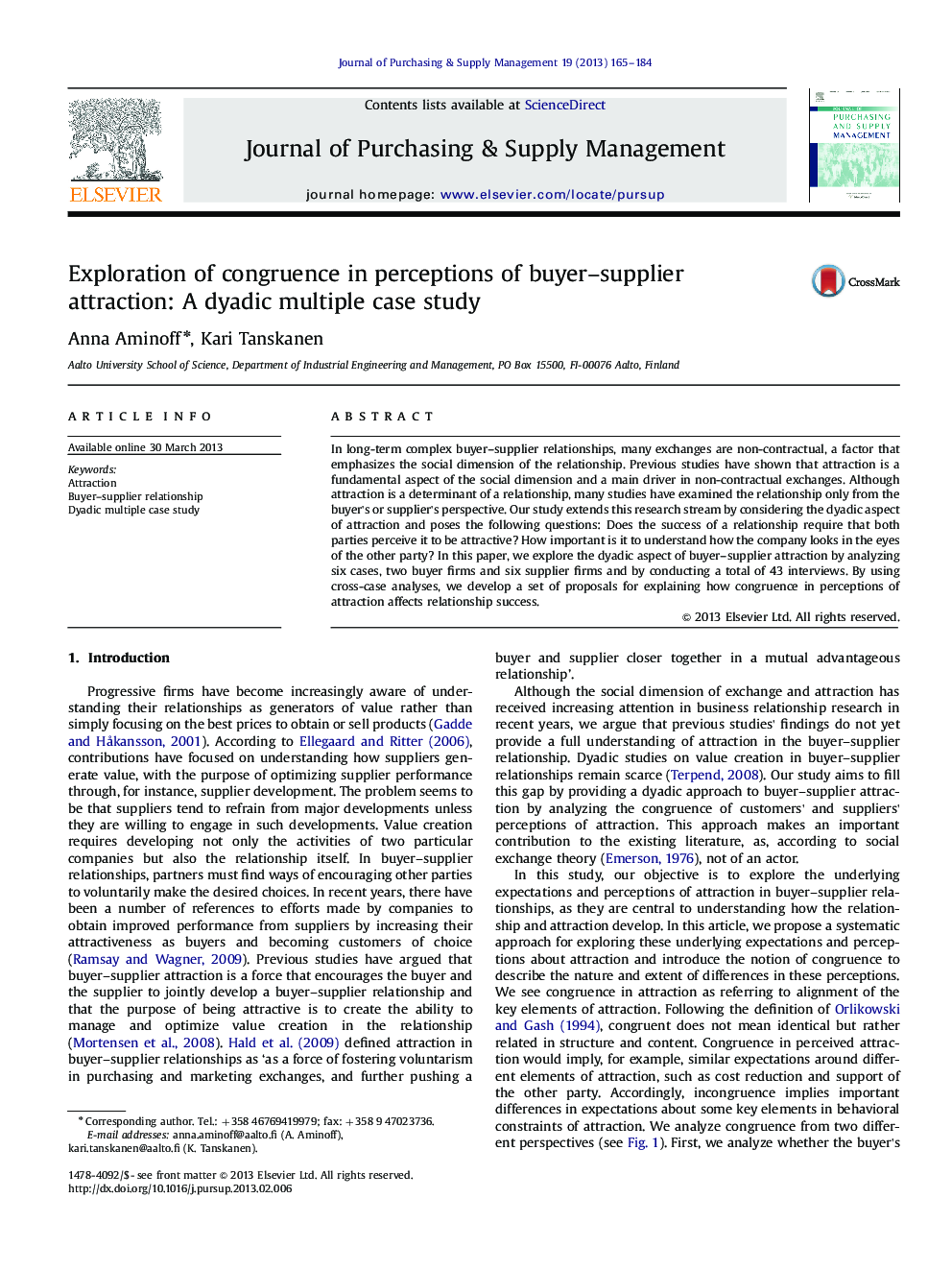| Article ID | Journal | Published Year | Pages | File Type |
|---|---|---|---|---|
| 1020794 | Journal of Purchasing and Supply Management | 2013 | 20 Pages |
•We study six buyer–supplier dyads for exploring the congruence of attraction.•We found that unilateral demands lead to incongruent perceptions of attraction.•The operational success of the relationship requires that at least one party has high attraction.•High mutual attraction predicts, but does not guarantee mutual success of the relationship.•Companies understand surprisingly poorly what makes them attractive.
In long-term complex buyer–supplier relationships, many exchanges are non-contractual, a factor that emphasizes the social dimension of the relationship. Previous studies have shown that attraction is a fundamental aspect of the social dimension and a main driver in non-contractual exchanges. Although attraction is a determinant of a relationship, many studies have examined the relationship only from the buyer's or supplier's perspective. Our study extends this research stream by considering the dyadic aspect of attraction and poses the following questions: Does the success of a relationship require that both parties perceive it to be attractive? How important is it to understand how the company looks in the eyes of the other party? In this paper, we explore the dyadic aspect of buyer–supplier attraction by analyzing six cases, two buyer firms and six supplier firms and by conducting a total of 43 interviews. By using cross-case analyses, we develop a set of proposals for explaining how congruence in perceptions of attraction affects relationship success.
